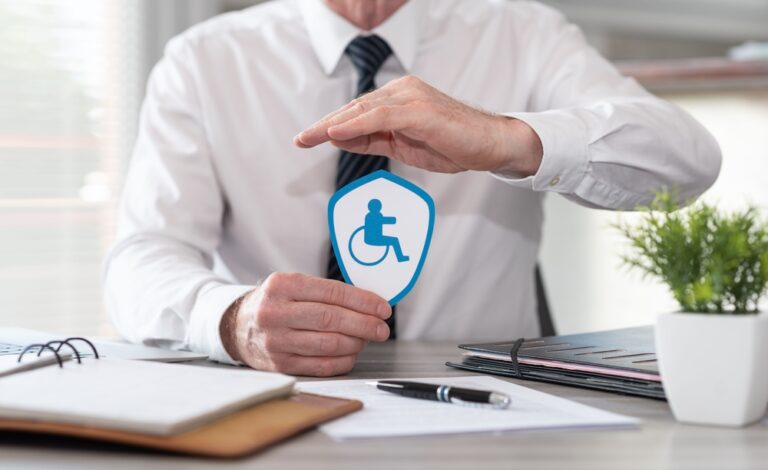Creating a clear and comprehensive estate planning checklist is one of the most important steps you can take to protect your assets, honor your wishes, and support your family’s future. While estate planning may seem complex, a well-organized checklist for estate planning can make it simpler and more accessible for individuals at any stage of life.
In this guide, we cover each stage of the estate planning process with clear steps and practical guidance to help you build a will and estate planning checklist that secures your legacy. Whether you are just beginning your plan or updating an existing one, this guide provides the information and resources you need to get started.
Estate Planning Definition: Protecting Your Wealth and Legacy
Estate planning is the process of preparing for the management and distribution of your assets after your death or in the event of incapacitation.
In simple terms, estate planning helps you decide who inherits your assets and under what conditions. By creating an estate planning checklist, you can ensure that no important detail is overlooked. Estate planning isn’t just for the wealthy; it’s essential for anyone who wants to protect their family and financial legacy.
Why You Need an Estate Planning Checklist
An estate planning checklist is essential because it helps organize the critical steps you need to take to ensure your wishes are carried out smoothly. Without a clear plan, your loved ones could face legal challenges, higher taxes, or even disputes over your estate. A checklist ensures that every vital aspect of the estate planning process is addressed and nothing is forgotten.
This guide will provide a step-by-step approach to the estate planning process, covering key documents like wills, power of attorney, healthcare directives, and living trusts. It will also include tips for asset protection and avoiding common estate planning mistakes.
Estate Planning Checklist: Documents and Steps

A structured estate planning checklist includes essential documents and clear steps that guide you in organizing and finalizing your plan. Here’s what you need:
✅1. Draft a Will and Testament
A will is one of the most fundamental documents in estate planning. It outlines how you want your assets distributed after your death and ensures that your family and loved ones receive what you intended. A will also allows you to:
- Name an executor to carry out your wishes.
- Appoint guardians for minor children.
- Specify who will inherit specific assets, whether that’s property, money, or personal belongings.
Without a will, state laws will dictate how your assets are distributed, which might not align with your preferences. Having a well-drafted will prevents this and helps avoid unnecessary legal disputes among heirs.
✅2. Create a Power of Attorney
A power of attorney (POA) grants someone you trust the authority to make financial or legal decisions on your behalf if you become incapacitated. There are two main types of POAs:
- Financial Power of Attorney: This allows someone to manage your financial affairs, such as paying bills, managing investments, or handling property.
- Healthcare Power of Attorney: This person will make medical decisions on your behalf if you are unable to do so.
The POA also prevents delays or complications if you become unable to make important decisions, ensuring your financial and legal matters are taken care of.
✅3. Establish a Healthcare Directive
A healthcare directive (also known as a living will or medical directive) allows you to specify your preferences for medical treatment if you’re unable to communicate those decisions yourself. It includes instructions about:
- ✅End-of-life care: Whether you want life-sustaining treatment, such as a ventilator or feeding tube.
- ✅Organ donation: Whether you wish to donate your organs after death.
This document ensures that your medical care aligns with your personal values and beliefs, while also relieving your loved ones of the burden of making these difficult decisions.
✅4. Set Up a Living Trust
A living trust helps manage your assets during your lifetime and after your death, often helping your heirs avoid the probate process. This document will allow you to:
- Transfer assets to a trust during your lifetime.
- Retain control of those assets as the trustee while you’re alive.
- Designate a successor trustee to manage or distribute the assets upon your death.
One of the key benefits of a living trust is that it allows your assets to bypass the probate process, ensuring that your beneficiaries receive them faster and with more privacy. It can also help reduce estate taxes and protect your assets from legal challenges.
On the other hand, unlike a will, a living trust can be used to manage your assets while you are still alive and also after your death.
✅5. Designate Beneficiaries
Not all of your assets will pass through your will or trust. Many financial accounts, such as life insurance policies, retirement plans, and bank accounts, allow you to name beneficiaries directly. These designations take precedence over your will, so it’s crucial to ensure they are up to date.
Beneficiary designations ensure that these assets transfer directly to your chosen individuals without going through probate.
Updating beneficiary designations is paramount. Regularly review and update the beneficiary designations on your life insurance policies, retirement accounts, and bank accounts to ensure they align with your current wishes.
✅6. Plan for Asset Protection and Estate Taxes
Asset protection and estate tax planning are essential steps for safeguarding your wealth and reducing tax liabilities for your heirs. Here are a few strategies:
- Irrevocable Trusts: An irrevocable trust transfers asset ownership, shielding it from potential legal challenges and reducing taxable estate size.
- Gifting: Making gifts during your lifetime allows you to transfer wealth while taking advantage of tax exemptions, minimizing the tax burden on your estate.
- Tax-Efficient Investments: Work with a financial professional to incorporate tax-efficient growth strategies into your estate plan.
Strategic estate tax planning preserves more of your wealth for your beneficiaries, helping them avoid unnecessary taxes and administrative costs.
Selecting the Right Trustee for Trust Administration

Choosing the right trustee is one of the most important decisions you’ll make in the estate planning process. However, you may consider any of the following possibilities:
- A family member or friend: Many people appoint a family member or close friend as trustee. This individual may have a better understanding of your wishes and family dynamics. However, it’s crucial to assess whether they have the time and financial acumen to manage your estate. The trustee should also remain impartial, especially if there are potential conflicts between beneficiaries.
- Appointing a professional trustee: If your estate is complex or you want an impartial administrator, a professional trustee—such as a lawyer, financial institution, or fiduciary—may be a better choice.
- Using co-trustees for balance: For a more balanced approach, you can appoint co-trustees, such as a family member alongside a professional. This allows the personal insight of a trusted family member combined with the expertise of a professional.
Since a trustee’s role can span many years, it’s wise to plan for the possibility that your designated trustee may be unable or unwilling to serve in the future. Always name an alternate trustee or set up a succession plan to ensure smooth administration of your estate.
Apart from that, outline the trustee’s responsibilities and powers in the trust document. This will help prevent ambiguity and ensure that your trustee understands your exact wishes regarding asset management and distribution.
Estate Planning Tips & Best Practices

Creating an effective estate plan involves more than just drafting documents—it requires thoughtful planning, regular updates, and careful execution to ensure that your wishes are honored. Here are some tips and best practices to help you create a solid estate plan that protects your assets and your loved ones.
1. Work with a Qualified Estate Planning Attorney
While it may be tempting to use online templates, working with an experienced estate planning attorney ensures that your documents are legally sound and customized to your specific needs. An attorney can:
- Help you navigate complex legal and tax implications.
- Ensure all your documents meet state laws and are properly executed.
- Provide advice on strategies to protect assets and reduce taxes.
- Assist in creating detailed trusts, wills, and other documents that reflect your wishes.
2. Update Your Estate Plan
Your estate plan is not a set-it-and-forget-it arrangement. Life circumstances change, and your plan should evolve with them. Regularly reviewing your estate plan ensures that it remains aligned with your current wishes.
Key times to update your plan:
- After major life events: Marriage, divorce, the birth of children, or the death of a beneficiary are significant reasons to review your estate plan.
- Changes in financial status: Acquiring or selling significant assets, receiving an inheritance, or changes in tax laws may warrant updates.
- At regular intervals: Set a reminder to review your estate plan every few years, even if nothing major has changed, to keep everything current.
This proactive approach prevents outdated or incomplete plans from causing issues for your heirs.
3. Communicate Your Wishes to Your Family
Estate planning often involves difficult conversations, but it’s important to communicate your wishes clearly with your loved ones to avoid confusion or disputes later.
- Explain your plan: Share the key aspects of your plan with your beneficiaries, especially if there are elements they may not expect, such as uneven distribution of assets or special provisions for certain family members.
- Designate key roles: Make sure your chosen executor, power of attorney, and healthcare proxy understand their responsibilities and are prepared to carry them out.
- Clarify your intentions: Open communication can help your loved ones understand the rationale behind your decisions and reduce the potential for disagreements or challenges after you’re gone.
By discussing your plans, you set expectations and help ensure a smoother transition for your family.
4. Be Specific and Detailed in Your Instructions
Ambiguity can lead to confusion and legal challenges. When drafting your estate plan, be as specific as possible about your wishes and how your assets should be handled.
- Asset distribution: List the beneficiaries of each asset, and provide detailed instructions on how and when these assets should be distributed. For instance, you may want to leave certain assets to your children only when they reach a specific age.
- Special provisions: If you have specific goals for your estate, such as charitable donations or setting up trusts for education, make sure these details are fully outlined.
- Digital assets: Don’t forget to include instructions for your digital assets, such as social media accounts, online banking, and cryptocurrencies. Provide access details and outline your wishes for managing or distributing these assets.
The more precise you are in your estate plan, the less room there is for interpretation, which can help prevent disputes.
How to Draft a Checklist in Estate Planning
When drafting your own estate planning checklist, use the following steps as a guide:
- Start with the essential documents: will, power of attorney, and healthcare directive.
- Include steps for setting up a living trust if needed.
- List assets that need beneficiary designations and update them regularly.
- Outline tax and asset protection strategies to protect wealth.
- Consider roles for trust administration and designate a trustworthy, capable trustee.
This personalized checklist simplifies estate planning and ensures that no critical element is overlooked.
Protect Your Legacy with an Estate Plan

Creating a comprehensive estate plan is one of the most important steps you can take to protect your assets, ensure your wishes are honored, and provide for your loved ones after you’re gone.
This estate planning checklist and recommendations will help you ensure that your assets will Choosing the right trustee is a crucial part of this process, as the person or entity you select will play a significant role in managing your estate and protecting your legacy.
FAQs: Estate Planning Checklist
What is the difference between a will and a trust?
A will outlines how your assets will be distributed after death and must go through probate. A trust, on the other hand, can take effect during your lifetime and helps avoid probate, allowing for a faster and more private transfer of assets.
How often should I update my estate plan?
It’s important to review your estate plan regularly, especially after major life events like marriage, divorce, the birth of a child, or significant changes in financial circumstances.
How can I minimize estate taxes for my heirs?
You can reduce estate taxes by using strategies like gifting assets during your lifetime, setting up irrevocable trusts, and taking advantage of estate tax exemptions and deductions.







